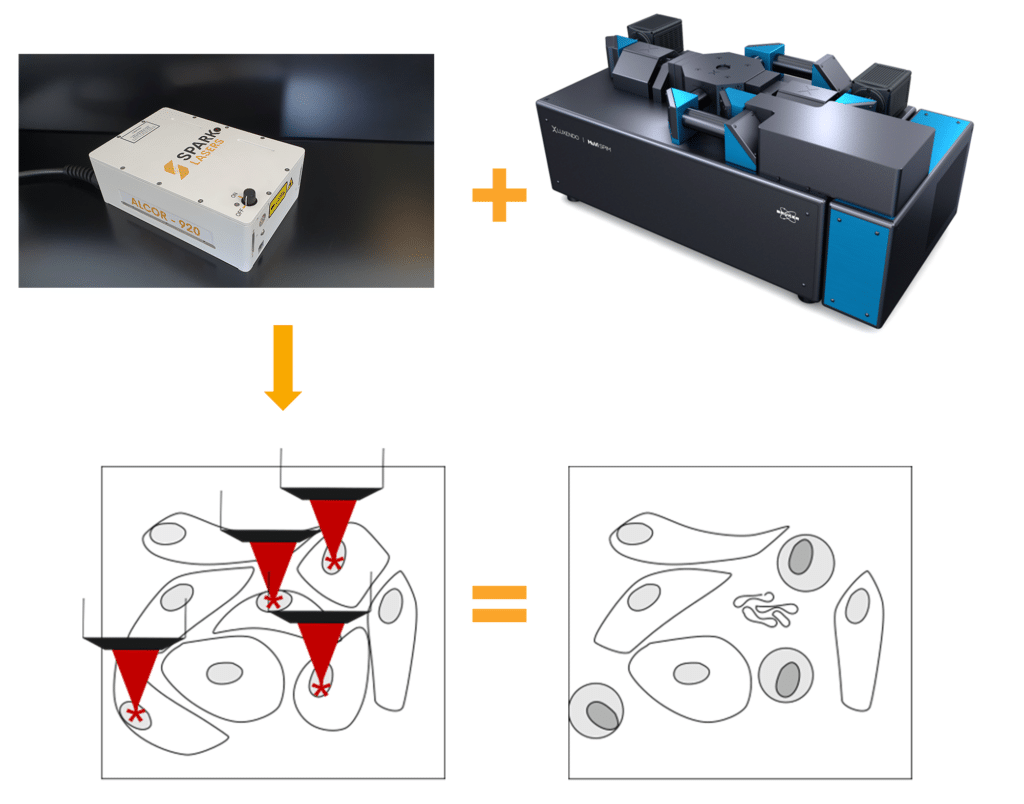Cell and tissue manipulation with 920 nm femtosecond fiber laser
SPARK LASERS collaborates with the University of Côte d’Azur and Luxendo (a Bruker company) to provide femtosecond laser dissection of the supracellular actomyosin network in the early Drosophila embryo.

Dr. Matteo Rauzi, Université Nice-Côte d’Azur, Intitut de Biologie Valrose, CNRS, Inserm, France
“The ALCOR 920-2W laser (with integrated GDD pre-compensator and XSight module with AOM) , is a compact, versatile and powerful tool for 2-photon excitation/activation and multi-photon laser ablation in biological samples. Thanks to its very sharp pulses (<90 fs) and high power at 920 nm, accurate dissections of the actin cytoskeleton can be performed without collateral damage (e.g., cavitation bubbles). With the ALCOR 920-2W short pulses, fine dissection of the actomyosin cytoskeleton can be achieved also with lower NA objectives (e.g., down to 0.8 NA). This LASER is thus also suited to perform fine ablations in multiview light sheet microscopy (MuVi SPIM, BRUKER Luxendo) that can accommodate objectives with 0.8 – 1.0 NA.
In a 3-way collaboration between the University Côte d’Azur, SPARK LASERS and BRUKER LUXENDO, the ALCOR 920-2W LASER was coupled to the MuVi SPIM PM to performe precise dissection of the supracellular actomyosin network formed at the apical side of prospective mesoderm cells during Drosophila embryo gastrulation. After actomyosin dissection, the contractile actomyosin network recoils revealing underlying mechanical tension while cell membrane integrity is eventually preserved (see video).
After a long lasting experience using ultra-fast lasers, I believe that this novel generation of fiber femtosecond laser at the wavelength of 920nm offers an unprecedented tool for cutting edge experimentation in modern biology.«
Please click on the video below to watch photo ablation and Drosophila embryo showing fast recoil after ablation :